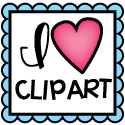I've been working with my students on unpacking our standards. I read an article about getting students to take more ownership in their learning, and I think teaching them about our benchmarks and mastery is a perfect way to do this.
We just began a new unit in math on Integers and Rational Numbers. I have to cover TEN benchmarks in the Number Sense standard that deal with integers and rational numbers. I projected a few of the benchmarks on the board, and we spent time discussing what each one meant, and the skills that we would cover. We also talked about what it meant to have mastery in each skill.
My students keep a copy of our standards in the front of their math notebooks. Included is each benchmark for our entire year. I've begun grading assessments according to each benchmark. This allows my students to see specifically what skill they have mastered, and what they still need to work on. Here is an example from a Decimals test I recently gave:
On the test I covered Least Common Multiple/ Greatest Common Factor and computation of decimals in all four operations. My Common Core standards include:
6.NS.3: Fluently add, subtract, multiply and divide multi-digit decimals using a standard algorithm
6.NS.4: Find common factors and multiples.
So I gave this test two grades. I staple a grade sheet to the front of the test that shows the benchmark grade for each section, and then students put these grades on their benchmarks sheets in their interactive notebooks. That way they can see what skills they have mastered and what skills they need to work more on. My students were really motivated about reaching mastery level. They want to maintain that A/B status.
With this unit I also started including my benchmarks on the wall in my classroom. After each assessment I post how many students reached A/B status. I don't post individual names, I don't think that is fair. You certainly could do this, but I like the anonymity of just A/B status. My students want to be a part of this group. I made a BIG BIG BIG deal out of it... passing out Mardi Gras beads to everyone that scored an A or B on EITHER benchmark, dancing, clapping, playing music.
I wanted as many students as possible to reach this point. Especially the first time I tried it. I was looking for some serious extrinsic motivation from this activity. Based on their smiling faces, I think I achieved it!
I would love to hear how you motivate your students!!

0
We just began a new unit in math on Integers and Rational Numbers. I have to cover TEN benchmarks in the Number Sense standard that deal with integers and rational numbers. I projected a few of the benchmarks on the board, and we spent time discussing what each one meant, and the skills that we would cover. We also talked about what it meant to have mastery in each skill.
My students keep a copy of our standards in the front of their math notebooks. Included is each benchmark for our entire year. I've begun grading assessments according to each benchmark. This allows my students to see specifically what skill they have mastered, and what they still need to work on. Here is an example from a Decimals test I recently gave:
On the test I covered Least Common Multiple/ Greatest Common Factor and computation of decimals in all four operations. My Common Core standards include:
6.NS.3: Fluently add, subtract, multiply and divide multi-digit decimals using a standard algorithm
6.NS.4: Find common factors and multiples.
So I gave this test two grades. I staple a grade sheet to the front of the test that shows the benchmark grade for each section, and then students put these grades on their benchmarks sheets in their interactive notebooks. That way they can see what skills they have mastered and what skills they need to work more on. My students were really motivated about reaching mastery level. They want to maintain that A/B status.
With this unit I also started including my benchmarks on the wall in my classroom. After each assessment I post how many students reached A/B status. I don't post individual names, I don't think that is fair. You certainly could do this, but I like the anonymity of just A/B status. My students want to be a part of this group. I made a BIG BIG BIG deal out of it... passing out Mardi Gras beads to everyone that scored an A or B on EITHER benchmark, dancing, clapping, playing music.
I wanted as many students as possible to reach this point. Especially the first time I tried it. I was looking for some serious extrinsic motivation from this activity. Based on their smiling faces, I think I achieved it!
I would love to hear how you motivate your students!!












































